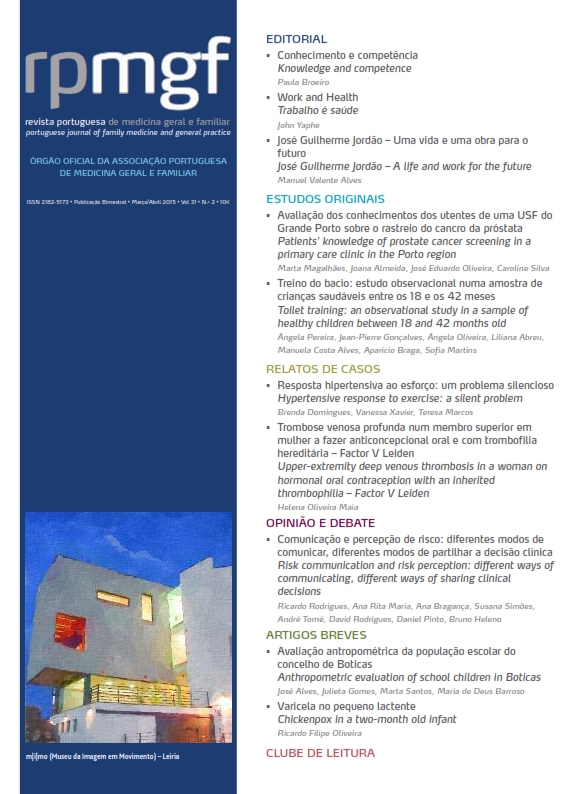Risk communication and risk perception: different ways of communicating, different ways of sharing clinical decisions
DOI:
https://doi.org/10.32385/rpmgf.v31i2.11468Keywords:
Risk, Health Communication, Uncertainty, Decision Making, Individualized MedicineAbstract
An informed clinical decision arises from a dialogue, where the patient shares biopsychosocial information, preferences and values with his/her physician. Physicians share information about epidemiology and the risk of interventions. We can communicate risk using words, numbers or graphs and the chosen format influences patient’s perceptions and behaviour. The format is not always understood, and the inability to reason with numbers (innumeracy) constitutes an important barrier to communicate in an effective way. Despite that, the impact of innumeracy can be lessened through communicational strategies. Frequencies, absolute risk reduction and pictograms convey risk information in a more realistic and understandable way, irrespective of numeracy. There is always uncertainty about risk estimates, but physicians should focus on helping patients dealing with uncertainty. Furthermore, we should understand risk in an individualized context by taking into account personal factors that influence benefits or harms related to the proposed interventions. Regardless of population policies, decisions about health are always made by the patient, who is an autonomous and free person.Downloads
Downloads
Published
How to Cite
Issue
Section
License
The authors will assign to the RPMGF the sole right to publish and distribute the content of the manuscript specified in this declaration via physical, electronic, broadcasting or any other medium that may come into existence. They also grant the RPMGF the right to use and exploit this manuscript, in particular by assigning, selling or licensing its content. This permission is permanent and takes effect from the moment the manuscript is submitted, has the maximum duration allowed by applicable Portuguese or international law and is of worldwide scope. The authors further declare that this assignment is made free of charge. If the RPMGF informs the authors that it is not going to publish their manuscript, the exclusive assignment of rights ceases forthwith.
The authors authorise the RPMGF (or any entity it may appoint) to act on their behalf when it believes that copyright may have been infringed.





